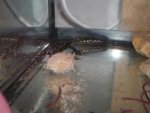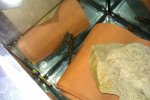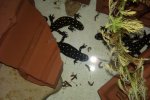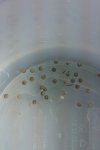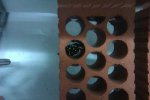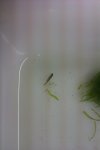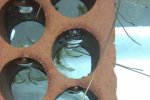ferreron
New member
- Joined
- May 7, 2007
- Messages
- 17
- Reaction score
- 3
- Points
- 3
- Country
- Spain
- Display Name
- Carlos
Hello:
I've also observed courtship in my group of strauchii, just like last year, although that time there weren't any eggs.
This year things seem a bit different: the females are fatter than the previous year, are paying more attention to the male and although I've not seen any spermatophores yet (I see them for a short time every week), about 15 days ago one of the females had some whitish stuff on her cloaca, which could have possibly been one.
During november and december they were exposed to low temps, about 5ºC or slightly more. During january it's been unusually hot in my area, and although temps inside the tanks have never gone higher than 10-11ºC, they, in general, did rise over those of previous months. Now the cold is coming back and I'm worried this could condition them in some way.
Do you think I should use a heater to prevent the temps going down and gradually and artifitially increase the temperature, or should I just let the cold do its thing?
Thank you very much.
YouTube - Neurergus strauchii courtship
I've also observed courtship in my group of strauchii, just like last year, although that time there weren't any eggs.
This year things seem a bit different: the females are fatter than the previous year, are paying more attention to the male and although I've not seen any spermatophores yet (I see them for a short time every week), about 15 days ago one of the females had some whitish stuff on her cloaca, which could have possibly been one.
During november and december they were exposed to low temps, about 5ºC or slightly more. During january it's been unusually hot in my area, and although temps inside the tanks have never gone higher than 10-11ºC, they, in general, did rise over those of previous months. Now the cold is coming back and I'm worried this could condition them in some way.
Do you think I should use a heater to prevent the temps going down and gradually and artifitially increase the temperature, or should I just let the cold do its thing?
Thank you very much.
YouTube - Neurergus strauchii courtship
Last edited:

